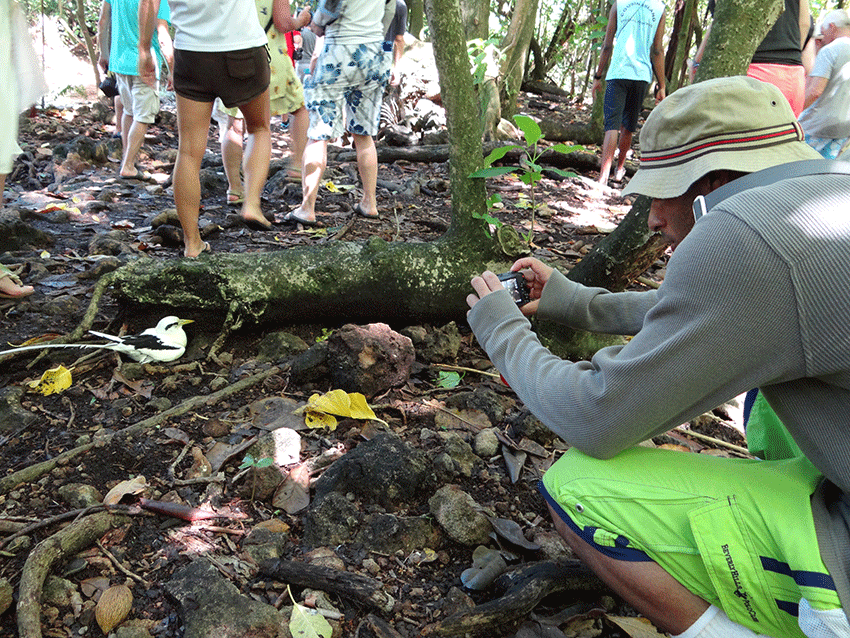
As a ‘veteran’ volunteer of Cousin Island turtle season, I have been able to witness some of the most incredible wildlife spectacles. For example, watching turtles as they emerge from the water to embark on their journey to lay their eggs, then later observing what seemed to me, millions of hatchlings scattered all over these stunning beaches as they instinctively make their way to the ocean. The knowledge that they too will one day return to the same beach to lay their eggs is mind blowing!
Another phenomenon that Nature Seychelles staff and volunteers working on Cousin Island Special Reserve marvel at is, of course, the wide variety of birds on the island. We continue to observe and monitor these birds even in our spare time.

As the birds here have very few predators, you are able to get very close to them, which is amazing. It was a fun and unforgettable experience being here for the Hawksbill Turtle nesting season, however, returning to Cousin this season has been eye opening.
For the last few months volunteers and staff have been monitoring the breeding success of White Terns (Gygis alba ) and the White tailed Tropic Birds (Phaethon lepturus). I have been concentrating on the White Terns. To conduct the breeding success we first find 100 nesting adults with an egg and then follow their progress from hatching all the way to (hopefully) flying off to find its own food.

It has been a great opportunity for me to learn more about birds as in my previous visit here we did not study the birds in such depth but merely observed them and appreciated them. However, the volunteers presently get to examine these birds throughout their life cycle; from when the egg is laid all the way through to when they fledge.
On Cousin we normally have a success rate of about 20 percent for White Terns and around 60 percent for White Tailed Tropic Birds. The low success rate of the white terns is partly due to the natural behaviour of the bird. Terns do not build nests but simply lay their eggs on a branch cavity and eggs therefore frequently plummet to the ground in high winds or rain.

Additionally, the invasive Pisonia grandis trees are a threat to chicks as well as adult birds on Cousin. This tree is not very common on most islands in the Seychelles, except those with a lot of sea birds. The pisonia tree has very sticky seeds that are distributed by attaching to birds feathers. This causes many fatalities for seabirds including the white tern when too many seeds get stuck on their feathers; the birds are unable to fly to find food and eventually die of starvation.
This is a natural phenomenon on many tropical islands where there are seabirds. But Nature Seychelles staff and volunteers try to save as many birds as we can by removing the seeds off their feathers when we find them immobile on the ground.
Although this has resulted in high death rates for my White Terns that I have been monitoring; the population is stable and tourists and volunteers will be able to come to Cousin and see these stunning birds for many years to come. I have thoroughly enjoyed my time on Cousin and it has truly been incredible to see turtles nesting followed by hatchlings scurrying down the beach, and to follow the life cycle of White Terns. Gaining the knowledge and skills from the volunteer programme has been superb.
Kate Robinson

